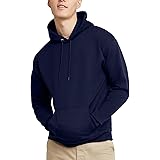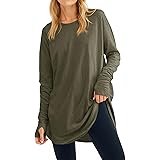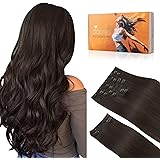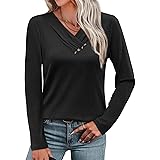The fashion industry’s environmental footprint is substantial, with textile production contributing significantly to global carbon emissions, water pollution, and landfill waste. Reports indicate that over 100 billion garments are produced annually, many of which end up in landfills, emphasizing the urgent need for more sustainable practices. As highlighted in the accompanying video, truly sustainable fabric remains an aspiration, yet certain materials offer considerably more eco-friendly alternatives. Understanding these distinctions empowers consumers and creators to make more informed choices.
Embarking on a journey to understand sustainable fabric begins with recognizing that no textile is entirely without environmental impact. Every stage of fabric creation, from raw material sourcing to manufacturing and disposal, incurs a cost to our planet. However, significant differences exist between fabrics regarding their overall environmental burden, making some options far more preferable than others.
Perhaps the most sustainable fabric is the one you already own and cherish. Extending the life of existing garments reduces demand for new production, conserving resources and minimizing waste. This principle encourages repairing, repurposing, and maximizing the utility of our current wardrobes rather than continually purchasing new items, even those labeled as “sustainable.”
Understanding the Fabric Life Cycle: A Key to Sustainable Choices
Experts often evaluate a fabric’s environmental impact through its entire life cycle, from “cradle to grave.” This comprehensive assessment considers resource extraction, processing, manufacturing, distribution, use, and eventual disposal or recycling. By analyzing each stage, we can identify environmental hotspots and determine which materials offer genuinely more sustainable pathways.
Factors like water usage, energy consumption, pesticide application, chemical processing, and biodegradability all contribute to a fabric’s overall sustainability profile. For instance, a fabric that requires minimal water and pesticides during growth, utilizes a closed-loop production system, and naturally biodegrades at its end of life is generally considered more sustainable. Conversely, materials with extensive chemical treatments, high energy demands, or non-biodegradable properties pose greater environmental challenges.
Five Fabrics Offering More Sustainable Alternatives
The video above introduces five key fabrics often lauded for their more sustainable attributes. Exploring each of these in greater detail reveals the nuances and specific benefits that make them stand out in the textile landscape.
Cotton: A Common Yet Complex Fiber
Cotton, derived from a fluffy plant, is celebrated for its softness and natural biodegradability when unprocessed. However, its environmental footprint varies dramatically across different cultivation methods.
Traditional Cotton’s Heavy Toll on Resources
Conventional cotton farming is notoriously resource-intensive, requiring immense quantities of water and synthetic pesticides. Shockingly, one kilogram of cotton can demand approximately 20,000 liters of water, an amount equivalent to years of drinking water for an individual. This excessive water use often strains local water supplies and contributes to ecological depletion in arid regions. Furthermore, the heavy reliance on pesticides and fertilizers leads to soil degradation, water contamination, and significant biodiversity loss, posing serious threats to ecosystem health.
Organic Cotton: A Step Towards Sustainability
Organic cotton offers a significantly improved alternative by prohibiting the use of synthetic pesticides, herbicides, and genetically modified organisms (GMOs). This practice safeguards soil health, protects water sources from chemical runoff, and supports local biodiversity. While organic cotton still requires substantial water, particularly in rain-fed regions, its cultivation methods foster a healthier environment for both workers and surrounding ecosystems. Global certifications, such as the Global Organic Textile Standard (GOTS), ensure strict environmental and social criteria are met throughout the entire supply chain.
Recycled Cotton: The Optimal Choice
Recycled cotton represents the most sustainable option within the cotton family. This process involves collecting pre-consumer waste (e.g., textile scraps from manufacturing) or post-consumer waste (e.g., discarded garments) and transforming it into new fibers. By salvaging existing cotton, this method drastically reduces the need for virgin cotton cultivation, saving thousands of liters of water and avoiding the use of new pesticides. Additionally, it diverts textiles from landfills, mitigating textile waste and conserving valuable resources that have already been expended in the initial production cycle.
Hemp: Nature’s Resilient Fiber
Hemp, often referred to as marijuana’s “sober sister,” is an incredibly versatile and environmentally friendly fiber derived from the cannabis Sativa plant. Unlike its illicit cousin, industrial hemp contains negligible levels of THC, making it suitable for a wide range of applications.
This remarkable plant boasts exceptional ecological benefits, requiring significantly less water than cotton—approximately 500 liters per kilogram compared to cotton’s 20,000 liters. Hemp is a high-yield crop, producing two to three times more fiber per hectare than cotton, maximizing land use efficiency. Furthermore, it naturally fertilizes the soil it grows in, returning nutrients and improving soil structure without the need for chemical inputs. Its natural pest resistance further reduces the need for harmful pesticides, contributing to healthier agricultural practices.
Despite its impressive sustainability credentials, hemp faces challenges such as historical stigma, which has limited its widespread adoption and kept supply levels low. Consequently, processing infrastructure for hemp is less developed than for other fibers, leading to higher production costs. As a fabric, hemp is known for its durability, breathability, and strength, though some find it prone to wrinkling, which can be a minor aesthetic drawback.
Linen: The Ancient Eco-Warrior
Linen, derived from the flax plant, is another ancient fiber celebrated for its exceptional sustainability. The flax plant thrives in rough soils with minimal need for water or pesticides, making it a low-impact crop. Crucially, every part of the flax plant can be utilized, from its fibers for textiles to its seeds for food and oil, resulting in virtually zero waste from cultivation.
When left unprocessed, linen is 100% biodegradable, capable of decomposing rapidly under appropriate conditions—potentially in as little as two weeks. However, its natural earthy tones often lead manufacturers to bleach or dye the fabric, a process that can introduce chemicals and significantly hinder its biodegradability. Opting for undyed or naturally colored linen helps preserve its ecological integrity.
Linen is prized for its strength, absorbency, and ability to keep the wearer cool in warm climates. Its inherent durability means linen garments can last for many years, further contributing to their sustainable profile by extending product lifecycles. Choosing linen products that specify eco-friendly dyeing processes or remain in their natural state offers the greatest environmental benefits.
Tencel Lyocell: Innovation in Wood Pulp Fibers
Tencel Lyocell stands as a notable innovation in sustainable fiber production, although it requires more energy in manufacturing compared to natural fibers like linen or recycled cotton. This semi-synthetic fiber is produced from sustainably sourced wood pulp, typically from eucalyptus, beech, or spruce trees, which are often grown on marginal land unsuitable for food crops.
The manufacturing process for Tencel Lyocell is distinguished by its “closed-loop” system. This means that a non-toxic organic solvent used to dissolve the wood pulp is recovered and reused at an impressive rate, often exceeding 99%. This efficient recovery significantly reduces wastewater discharge and minimizes the environmental impact of chemical use, distinguishing it from traditional viscose or rayon production, which often employs more hazardous chemicals and less efficient recovery rates. Unlike viscose, which has historically been linked to the deforestation of ancient and endangered forests, Tencel’s wood is typically sourced from responsibly managed plantations certified by organizations like the Forest Stewardship Council (FSC).
Despite the energy input required for processing, Tencel Lyocell offers significant advantages in its responsible sourcing and minimal chemical footprint. Its resulting fabric is known for exceptional softness, breathability, moisture-wicking properties, and excellent drape, making it a popular choice for both fashion and home textiles. Efforts are continuously being made to power Tencel production facilities with renewable energy, further enhancing its sustainability credentials.
Wool: A Natural, Durable, Yet Ethically Complex Fiber
Wool, obtained from the fleece of sheep, offers a robust and hard-wearing natural fiber with impressive longevity. A well-made wool garment can last an individual 20 to 30 years, showcasing its incredible durability and reducing the frequency of textile purchases. As a natural animal fiber, wool is also 100% biodegradable, returning nutrients to the earth at the end of its lifespan.
However, the sustainability of wool is intertwined with complex ethical considerations regarding animal welfare. Traditional shearing practices, while often presented as a “haircut” for sheep, can sometimes involve methods that are painful or stressful for the animals, such as “mulesing” to prevent flystrike. Concerns also extend to the management of sheep farms, including potential overgrazing that can degrade land and contribute to soil erosion.
Opting for organic or certified wool ensures higher animal welfare standards and more sustainable land management practices. Organic certifications often mandate ethical treatment of animals, prohibition of certain pesticides on pastures, and responsible grazing rotations. Even more sustainable is recycled wool, which repurposes existing wool fibers, dramatically reducing the demand for virgin wool production and diverting textiles from landfill. This approach lessens the environmental burden associated with animal agriculture and textile processing, maximizing the value of resources already in circulation.
Empowering Your Sustainable Fabric Journey
As the video discusses, the journey toward understanding sustainable fabric is an ongoing process of education and conscious choice. Recognizing the nuances of each material, from its cultivation to its end-of-life, is crucial for making informed decisions. By prioritizing materials like recycled cotton, hemp, linen, and responsibly produced Tencel Lyocell, alongside ethically sourced organic or recycled wool, consumers can significantly reduce their environmental footprint. Ultimately, embracing these more sustainable fabrics and extending the life of what we already own represents a powerful step towards a more responsible fashion future.











